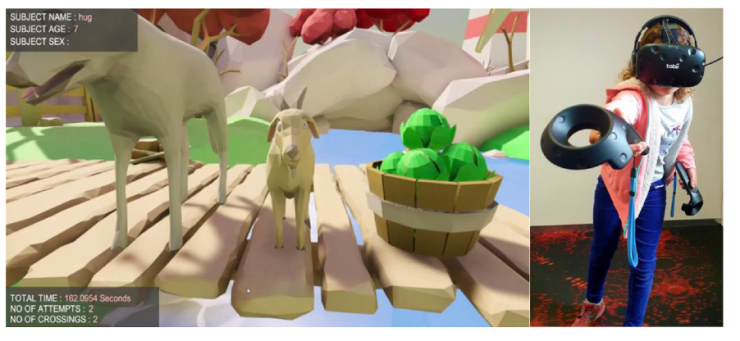With the rapid growth of technological advances such as high-speed computing, high-resolution graphics, and interface devices, virtual reality (VR) technology has become not only an exciting gaming technology but also one with many potential new applications, especially in education.
VR technology is gaining traction in educational and training settings and is expected to have widespread adoption within the classroom in the upcoming years. Immersive VR in education is predicted to be a $700 million industry by 2025, however before we see this technology being used in every classroom questions regarding its educational potential need to be answered.
VR and problem-solving skills
Problem-solving has been identified as an important educational skill for primary school students and advancements in digital technology for teaching and learning has created new ways for children to develop this skill. Various studies have suggested that digital technology can play a positive role in children’s learning of problem-solving skills, but is VR a useful tool to learn and practice problem-solving skills? and, do problem-solving skills learned with VR technology transfer to real-life?

The answer is “Yes”. At the Swinburne Babylab (Melbourne, Australia) we conducted a study where 120 children aged 7–9.9 years were randomly assigned to a problem-solving game in one of three conditions: board game, computer application, or VR.
The results showed that, overall, the percentage of children who completed the problem-solving game was higher in the VR condition (77.5%), compared with those in the computer application (32.5%) or board game (30%) conditions. We also found that the interest and enjoyment scores of participants using VR were significantly higher than participants in the other two conditions. Children in the VR condition showed perseverance and continued to solve the problem (only 8% gave up), whereas those in the other two conditions were quicker to give up (30% gave up in the computer application and 30% gave up in the board game condition).
Why VR is a better tool for problem-solving skills than more traditional mediums?
One possible explanation for the difference in performance between children using VR compared to children using the computer application or the board game, could be linked to the theory of embodied cognition. VR technology can place the user inside a computer-generated environment and allow them to interact with VR world by using physical gestures or movements that are similar to natural human movements. Physical interaction and bodily cues can assist cognitive processing. The natural feeling that VR technology provides the user could reduce the cognitive load (mental effort required to solve the task) as the user is directly immersed in the VR environment and requires less active imagination and effort to understand the VR world and the objects in it. This characteristic could free cognitive resources that can instead be used to solve the task. Results related to the interest and enjoyment perceived by the participants can also help us understand why children using Immersive VR performed better in the problem-solving task.
VR has the ability to stimulate the senses of the participants and present the information in a more realistic and authentic manner, resulting in increased interest and willingness to interact with the VR content or environment. Moreover, when children are interested in the material that is presented to them, they try harder to learn and solve learning tasks. Interest and motivation can be triggered by the environment of the medium used, and VR technology is known for its potential to elicit the interest of students when used as a tool for active engagement.
In our study, the children in the Immersive VR condition persevered longer to solve the task than in the other two conditions, whereas more children gave up within the 10-minute mark. Moreover, our results suggest that learning how to solve a problem-solving task and transferring the learning to the physical world is possible using VR. Children in the Immersive VR condition (as well as those in the computer application condition) were able to transfer the problem-solving knowledge learned during training to the physical board game.
Overall, VR is a useful medium as a tool to learn and practice problem-solving skills, which may be due to its ability to stimulate the senses of the user and present the information in a more realistic manner. A VR learning environment provides a global frame of reference and places less cognitive load on children’s minds, therefore providing children with an enhanced opportunity to understand and remember information presented through VR. In other words, VR technology is capable of engaging and motivating the user while also supporting cognitive processing and the transfer of knowledge.
Editor’s note: read the full article here.

Author
Paola Araiza-Alba recently finished her PhD in Health Science at Swinburne University researching the potential uses of VR in education. She is currently working in a research and development role at Liminal VR where she is creating virtual reality wellbeing, educational, marketing and clinical applications for workplaces, classrooms, and healthcare.

Author
For over 25 years Associate Professor Therese Keane has been a stalwart for empowering girls in STEM. Her passion and many achievements have been acknowledged by her peers in her receiving numerous national and state awards. Therese is currently the Deputy Chair of the Department of Education at Swinburne University.















